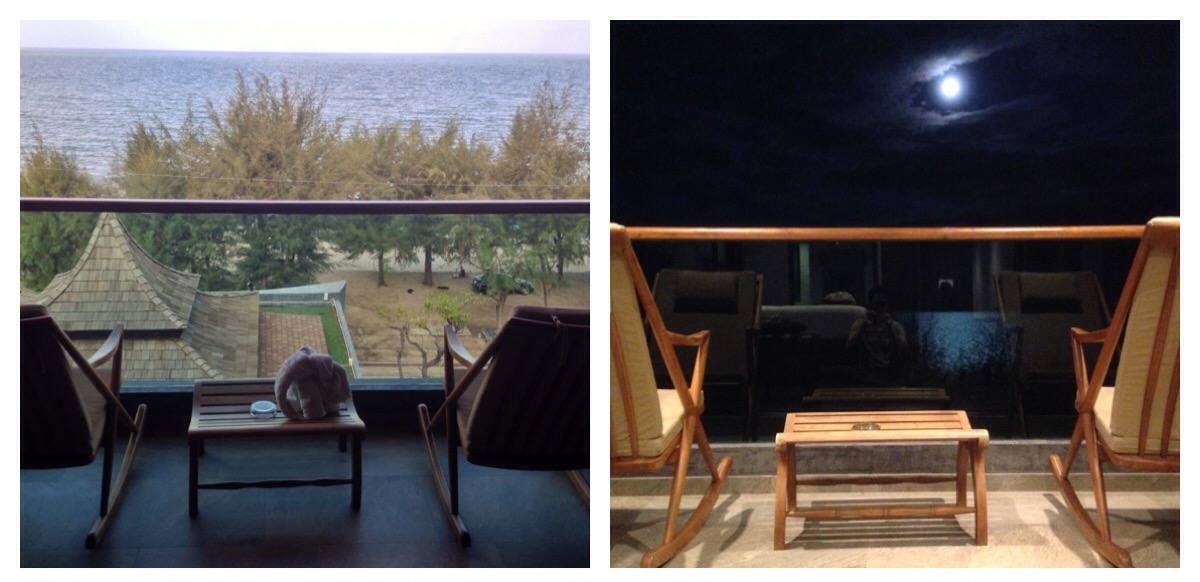The hotel we stayed in was also very quiet and, at times, we felt like we were the only group of people there. This is of course not always the case. Cha-am and its beaches are a hugely popular tourist destination for Thai day trippers and weekenders alike. It is only a few hours from Bangkok. Its long strip of beach stretches for almost 7 kilometers, making it the longest in Thailand. The seafood is relatively inexpensive. Aside from the beach there is still plenty to see in its unique town. The area is undoubtedly a star attraction for local Thai and increasingly also for foreigners, particularly the Scandinavians.Ten years back, the same description was used to apply to beaches like Pattaya and Bang-Saen of Chonburi Province where I went to school. But that is now history. Thanks to rapid infrastructure development and urbanization, Pattaya and Bang-Saen beaches today are rated ”very high” in water pollution, and ”high” in air pollution, noise pollution and dirtiness, according to NUMBEO, the world’s largest database of user-contributed data about cities and countries. Looking at the beautifully clean beach of Cha-am, I could not help but fear that it may run into the same fate as the Thai Government is attempting to boost tourism.But a news article in ’The Nation’ this morning has brought me some bright hope. A sustainable tourism development plan has been drafted and is now ready to be reviewed by the Cabinet for approval. Under the plan, Cha-am and five neighboring districts will come under zoning and regulations designed to ensure that tourism development is sustainable and that benefits truly go to local communities. In detail, new development projects will be controlled to be in line with the area’s infrastructure capacity, particularly traffic, and its waste and water treatment. Urban areas will be clearly defined along with hotel development zones and the creation of green areas. A public transport system will be in place and tourist targets will be set accordingly.Most significant of all is the engagement of local residents and local business operators. ”It’s a paradigm shift. Sustainability is assured if local residents initiate the projects that will be undertaken by government bodies. They are empowered to take a lead if they don’t want investors from far away to bag all the benefits,” said Nalikatibhag Sangsnit, director-general of the Designated Areas for Sustainable Tourism Administration (DASTA), a public organization supervising the Thai Government’s tourism development policy.”Without clear plans, the locals could be just maids or security guards. So far, our plans have been approved by over 90 per cent of local residents,” He added.This is a great news not only for Cha-am residents and nature lovers like me, but also for the country and every visitor. The sustainable tourism development plan is still pending the Cabinet’s endorsement, but there should be no more obvious choice than approving. Ten years from now standing in front of the beautiful beach of Cha-am and looking back, we will be glad it has been approved, making the paradigm shift!

Thailand in a Paradigm Shift to Sustainable Tourism
As July started, Kepa Mekong office had an annual Planning and Recreation Day in Cha-am (Phetchaburi Province), a beautiful beach destination in the Upper South of Thailand. As it was a low season and also the middle of the week, the area was rather quiet with very few people on the beaches and most shops and restaurants closed.
Teksti: Nattawat Theeralerttham Kuva: Nattawat Theeralerttham